Flashback: BootstrapLabs Applied AI Conference – AI and National Security
The BootstrapLabs Applied Artificial Intelligence Conference 2019 #AAI19 brought together the brightest and most experienced experts in the field of AI for an immersive day of learning, discussion, and connection.
On BootstrapWorks we have released the videos from this past conference to relive the moments and spread the knowledge around the diverse topics covered by our experts on stage.
BootstrapLabs has built a community of more than 40,000 people from over 60 countries who care about applying Artificial Intelligence to solve the hardest problems of our society.
Get access to practical wisdom on Applied AI methodologies and take advantage of AI’s powerful potential, sign up here to receive the videos directly into your inbox.
As tensions between super-powers mount on the international stage, trade tensions escalate, and the frequency and severity of cyber attacks amplify, it has never been so important to remind citizens of what is at stake. Panelists from the Technology for Global Security, U.S. Department of Homeland Security, and Defense Innovation Unit discuss key topics covered in the annual unclassified US National Intelligence Report and what they are doing within their respective organizations to accelerate the discovery, development, vetting, adoption, and deployment of AI and other new technologies in service of protecting American lives and interests around the world.
Moderator: Philip Reiner, Executive Director, Technology for Global Security
Panelists: Melissa Oh, Managing Director, Silicon Valley Innovation Program, U.S. Department of Homeland Security, S&T; David Rothzeid, Director, Acquisition Pathways, Defense Innovation Unit
Some of the key takeaways from the session are:
- The applicability of AI has matured in recent years and it has plenty of opportunity to make data-informed decisions for (military) missions but it is important to know how to apply AI to the national security sector.
- Currently it is used to support international border agencies to pre-screen travelers to help other countries conduct risk-assessments with predictive modeling and data visualization. It improves identity resolution to streamline passenger flow thus increasing efficiencies while keeping the country safe.
- Other examples include:
- A radar company focused on autonomous vehicles works on collision avoidance for small consumer drones to prevent them from intervening with helicopter operations.
- The DIU sourced algorithms from the community to help prioritize where to distribute national disaster recovery personnel in case of an event.
- Further, it is leveraging AI by using data of maintenance logs of legacy aircraft to support predictive maintenance.
- In government, R&D cycles are very long, but nowadays the technology is not born in military labs anymore. The question is how the DIU and the DHS can engage with DevOps to take advantage of the speed of innovation in the tech ecosystem to learn and integrate into their processes and systems.
- The ability to work with companies is a tremendous opportunity to generate significant deal flow and solve hard problems.
- In order to incentivize collaboration with the government, the DIU and the DHS lowered the barrier to entry: They host industry engagement events or post a generic problem statement online and companies can submit a 5-15 page whitepaper to propose a solution from the tech-companies’ perspective. Then follows an evaluation process with a pitch and proposal and ultimately results in a prototype project. If successful, it will be scaled into a full rate production contract. The DoD has an annual budget of $700B to reach national security objectives which represents opportunities for companies to tap into government budget and work on complex technical problems.
About Philip Reiner:
Philip Reiner is the Executive Director of Technology for Global Security, a global non-profit that bridges technology and policy makers to fix tech-driven emerging security threats. He previously served in the Obama White House as Senior Director for South Asia on the National Security Council staff; as a civil servant in the Office of the Secretary of Defense for Policy at the Pentagon; and worked for a number of years at Raytheon Space and Airborne Systems, in their Electronic Warfare, Remote Sensing, and Vision Systems units. He routinely guest lectures on emerging international security risks at UC Berkeley and Stanford University.
About Melissa Oh:
Melissa Oh is the Managing Director for the Department of Homeland Security (DHS) Science & Technology Directorate (S&T) Silicon Valley Innovation Program (SVIP). She is responsible for engaging entrepreneurs and innovators to help them better understand DHS’s mission and widen the pipeline of technologies addressing our most difficult homeland security challenges. Mrs. Oh has been at DHS since December 2002 and at S&T since September 2004 serving in several positions, prior to her current role, in Business and Finance Operations and Program Management across the Cyber Security and Border & Maritime Security Divisions. Mrs. Oh holds a B.S. in Cognitive Science, specializing in Neuroscience, from the University of California at San Diego and a M.S. in Systems Engineering from George Washington University.
About David Rothzeid:
Major David Rothzeid is an Acquisition Officer in the United States Air Force, currently assigned to Defense Innovation Unit, as the Director of Acquisition Pathways located in Mountain View, CA. Previous assignments include: Air Force Materiel Command, Hanscom AFB, MA; United States Special Operations Command, MacDill AFB, FL; Air Force Space Command, Peterson AFB, CO. He deployed a member of Special Operations Command in 2014 to Bagram AB, Afghanistan. He has a BA in Economics from Miami University, OH; and MBA in Management from the University of Colorado, Colorado Springs.
To sign up for our mailing list, click here.


